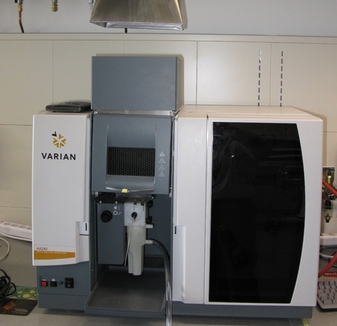Atomabsorptions-Spektroskopie (AAS)

Atomic Absorption Spectroscopy (AAS) uses the absorption of light to measure the concentration of gas-phase atoms. Since samples are usually liquids or solids, the analyte atoms or ions must be vaporized in a flame or graphite furnace. The atoms absorb ultraviolet or visible light and make transitions to higher electronic energy levels. The analyte concentration is determined from the amount of absorption. Applying the Beer-Lambert law directly in AA spectroscopy is difficult due to variations in the atomization efficiency from the sample matrix, and nonuniformity of concentration and path length of analyte atoms (in graphite furnace AA). Concentration measurements are usually determined from a working curve after calibrating the instrument with standards of known concentration.
The light source is usually a hollow-cathode lamp of the element that is being measured.
To date we have the following lamps:
- Na/Li/K
- Multielement lamp: Co, Cr, Cu, Fe, Mn, Ni
- Cs
We offer training at the instrument and help interpreting the data. Usage is at cost, so users only have to pay consumables (gas/standards, payed by usuage per hour) and a maintainance fee (fixed fee payed per measurement).
Please contact bioanalytics@bio.lmu.de for help, further information or a booking login account.

